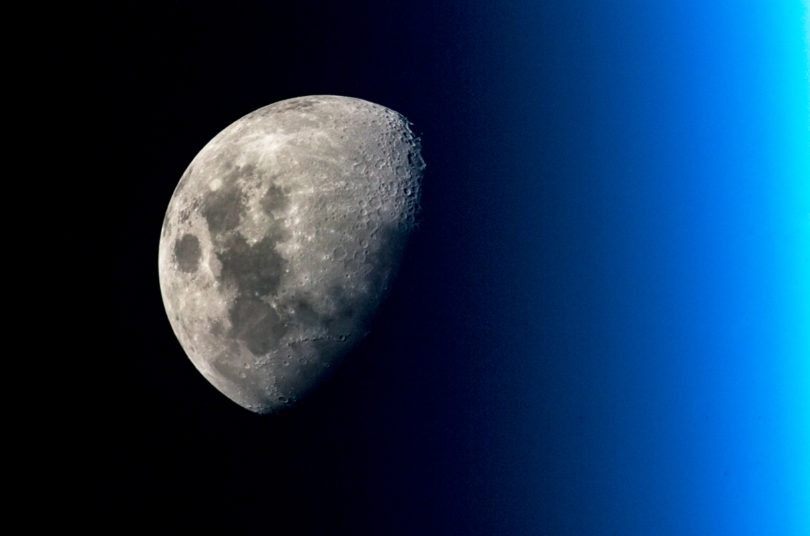On March 4th, a discarded rocket booster will collide with Hertzsprung Crater on the far side of the Moon, making it the first known unintentional litter to reach the lunar surface. Initially, skywatchers believed the booster was from a SpaceX Falcon 9 rocket launched in 2015, but it has now been identified as part of a Chinese Long March 3C rocket from 2014. The confusion surrounding its origin highlights the difficulty in tracking space debris near the Moon. As more countries and companies plan missions to the Moon and beyond, researchers anticipate a growing problem of lunar pollution. Here’s what they are doing to prepare.
Lunar space junk refers to debris orbiting the Moon. Currently, there are approximately 23,000 known pieces of debris measuring 30 centimeters or larger, along with up to 100 million fragments measuring 1 millimeter or larger. The U.S. Space Force tracks the larger debris using radar, but only up to geostationary orbit, which is 58,000 kilometers away from Earth. The Moon is almost 400,000 kilometers from Earth, and little is known about objects that come within 70,000 kilometers of its surface, known as the “cone of shame.” Constraints in technology prevent low-power radars from reaching this region, and telescopes struggle to detect objects that fly so close to the bright Moon.
Vishnu Reddy, a researcher who studies near-Earth objects at the University of Arizona, suggests that there are likely fewer than 200 large pieces of space junk around the Moon, although the exact number is unknown. However, in the next five years, this number could significantly increase due to approximately 50 planned missions targeting the lunar surface or its orbital space from the United States, China, Russia, other countries, and private companies.
What sets lunar space junk apart is that most debris that falls out of Earth’s orbit burns up upon re-entry into the atmosphere. However, the Moon’s lack of an atmosphere means that objects are not subject to re-entry. Instead, they simply crash into its surface. Lunar impacts generate dust composed of microscopic shards of abrasive volcanic glass, which caused numerous problems during the Apollo era. The Moon’s low gravity allows dust to travel long distances, potentially affecting exploration sites and future crewed bases.
Tracking lunar space junk poses challenges due to the complex gravitational interactions between Earth, the Moon, and the Sun. Objects can follow chaotic and unpredictable paths as they experience gravitational pulls from the Moon and Earth. Even slight differences in approach direction can significantly impact where an object ends up.
Efforts are being made to address this issue. The U.S. Air Force Research Laboratory has awarded $7.5 million to Vishnu Reddy and his team to develop better methods for tracking lunar space junk. They have built a small telescope and are working on algorithms that can differentiate reflective artificial debris from the bright glare of the Moon. Reddy compares this task to finding a tiny firefly next to a giant floodlight.
Aside from tracking, identifying the origin of each piece of space debris is crucial for determining liability in case of accidents. Space archeologist Alice Gorman from Flinders University highlights the importance of knowing who launched an object, as they are held responsible for any damage caused by their activity, even if they no longer have control over it.
Regarding the Chinese rocket in question, China’s space agency conducted an experiment in 2014 involving a spacecraft that circled around the Moon and returned to Earth, testing atmospheric re-entry capabilities. This mission, called Chang’e-5-T1, carried a secondary payload of scientific instruments on the upper stage of the Long March rocket for LuxSpace, a Luxembourg-based company. Initially, it was mistaken for a SpaceX rocket that launched the National Oceanic and Atmospheric Administration’s Deep Space Climate Observatory in 2015. However, additional observations and data from LuxSpace indicate that it is more likely a Chinese rocket. China’s Ministry of Foreign Affairs denied this claim, stating that the booster had burned up in Earth’s atmosphere. However, experts believe that the Chinese rocket is the best candidate for the upcoming lunar impact.
Having an official catalog or the results from Reddy’s surveillance program would help address future space junk problems beyond Earth. Jonathan McDowell, an astrophysicist at the Harvard-Smithsonian Center for Astrophysics, suggests that thinking about the lunar environment before it becomes an environmental problem would be a wise approach.

